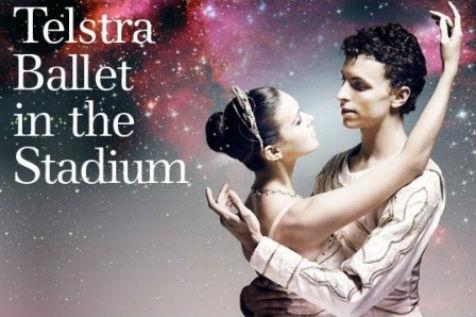It is widely acknowledged that a successful partnership with an arts organisation can help a business to:
– enhance brand awareness and reputation
– provide unique experiences for clients, staff and customers
– build employee and community engagement
– strengthen links with government and other business networks
During my Churchill Fellowship visit to the US, Canada and Britain, I observed a number of strategies that arts organisations take to articulate the benefits they offer to a potential business partner. Different businesses emphasise different benefits; this is driven by their objectives and the market in which they operate.
Bank of America Merrill Lynch is one of the biggest corporate supporters of the arts globally, supporting mainly flagship arts institutions. The main drivers for their arts partnerships are corporate reputation, prestige, client entertainment, employee engagement and being perceived as a leader in business. Their focus is on impact: “Is it going to change lives? Like programs which may involve arts and children at risk.”
While always taking a bespoke approach to negotiating business partnerships and benefits for exchange, the Museum of Modern Art (MoMA) revised their pitch template following input from a banking partner. The template first page now covers “the where, what, when, how, how much does it cost for naming rights etc,” while the second page covers demographics, benefits and images.
The prestigious arts organisations visited during the Fellowship were selected because of their success in corporate partnerships and fundraising. As a summary of their experience in developing business partnerships, the following list is not intended as a how-to-guide to business partnerships; rather it covers tips, strategies and concerns.
Some tips that are best practice for arts organisations include:
– Build relationships and networks and, if a prospective sponsor is interested, you must discuss and negotiate in person. It is a process of educating your partner.
– Know yourself. What is it that you do that brings people in? What do you have to sell that is commercially attractive? You must look hard at what you are and who you match with.
– Understand what business is looking for and what their key objectives are.
– There is a need to innovate and offer something creative and unique to business. The biggest advantage of the arts is their ability to take risks in a risk aware (not risk averse) way.
– Bespoke partnerships are essential. “Off the rack‟ partnerships better suit a corporate members’ program.
– Business development work in the arts is about face to face selling. Staff needs to be positive, enthusiastic and fun.
– Have fewer but better relationships, be excellent partners and communicate frequently – you want the corporation to have the best experience.
– A big challenge is that what a corporation wants to do is often additional to the arts organisation’s core business. The arts organisation needs to ”find the sweet spot and the spark for both parties”. Be clear about your organisation’s limitations with the partnership and where there is flexibility to leverage opportunities.
– Be empowered to walk away from a deal. A business partnership cannot influence curatorial and artistic decisions in way that the arts organisation’s integrity diminishes.
– If a business prospect indicates they are freezing sponsorships, that should not be the end of the story. The arts organisation could suggest doing something the following year or partnering on a particular project and paying next year. For example, lower the price this year and give more next year – try to make it work.
– The higher profile of your arts brand, the less you have to work to get money. Build your own brand so that the logo on a poster is worth more .
– Corporate partnerships for large arts institutions involve complex substantial marketing deals and the arts organisation must embrace servicing them properly.
In addition to the above accepted practice, there were some new approaches suggested:
– Use the distribution channels of your business partner to distribute your content and marketing to new and broad markets (Jazz at the Lincoln Center distributed CDs to the guests of their hotel partner).
– MoMA believes there is a need for seminars for business people. We need to teach corporations how to develop stronger partnerships with the arts and explain the many opportunities that different artforms can offer. Give them a “taste of the arts.” Follow up with each company separately, with a pitch of ”let me help you increase sales and increase your profile.”
– Sue Hoyle of the Clore Leadership Foundation suggested the corporate sector could invite senior staff from arts organisations to serve on business boards: this serves dual aims of embedding creativity in business and broadening networks for the arts.
Canada’s National Ballet School (NBS) offers a case study of success. Under Executive Director Jeff Melanson the NBS has eliminated a major deficit, increased revenue from CAD$13 million to CAD$20 million and grew their endowment from CAD$8 million to CAD$32 million – all during a recession. The reliance on government funding has decreased from 40% to 30% of the NBS’s overall budget. At the same time, he built a high performing administrative team, created new strategic partnerships with many arts and entertainment organisations (such as, So You Think You Can Dance Canada) and lobbied government to recognise the benefits of the arts.





